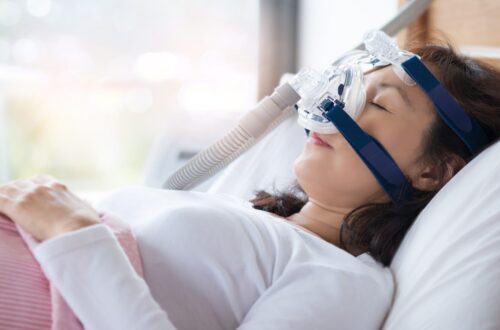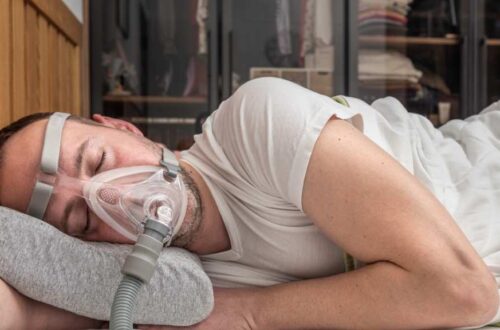
The Role of Humidity and Sleep Apnea Machines: Why It Matters
Sleep apnea is a common sleep disorder that affects millions of people worldwide. It is characterized by pauses in breathing or shallow breaths during sleep, which can lead to a disruption in sleep patterns and a range of other health issues. If left untreated, sleep apnea can increase the risk of developing high blood pressure, heart disease, and stroke.
Understanding Sleep Apnea
Sleep apnea is a condition that affects the way a person breathes while they sleep. There are two main types of sleep apnea: obstructive sleep apnea (OSA) and central sleep apnea (CSA). In OSA, the airway becomes blocked or narrowed, causing brief pauses in breathing. In CSA, the brain fails to send proper signals to the muscles that control breathing. Both types can result in poor sleep quality and daytime sleepiness.
What is Sleep Apnea?
Sleep apnea is a sleep disorder characterized by interruptions in breathing during sleep. These interruptions, called apneas, can last anywhere from a few seconds to a minute or longer. When breathing stops, the brain signals the body to wake up briefly to restore normal breathing. These frequent awakenings disrupt sleep patterns and prevent the individual from achieving deep, restorative sleep.

During an apnea episode, the oxygen levels in the blood can drop, leading to a variety of health issues. The body’s organs and tissues may not receive enough oxygen, causing strain on the cardiovascular system. This strain can increase the risk of developing heart disease, high blood pressure, and other cardiovascular conditions. Find more about How Sleep Apnea Machines Improve Daily Performance and Energy Levels by visiting https://supplementsforskinhealth.com/how-sleep-apnea-machines-improve-daily-performance-and-energy-levels/
Furthermore, the constant disruption of sleep can have a significant impact on a person’s daily life. Individuals with sleep apnea often experience excessive daytime sleepiness, which can make it difficult to concentrate and perform daily tasks. Morning headaches are also a common symptom, as the interruptions in breathing can lead to decreased oxygen flow to the brain.
Common Symptoms and Risks of Sleep Apnea
Common symptoms of sleep apnea include loud snoring, gasping for air during sleep, excessive daytime sleepiness, morning headaches, and difficulty concentrating. Sleep apnea can also increase the risk of developing other health problems, such as high blood pressure, heart disease, diabetes, and obesity.
Obesity is a significant risk factor for sleep apnea. Excess weight can contribute to the narrowing of the airway, making it more likely for apneas to occur. Additionally, fat deposits around the neck and throat can put pressure on the airway, further obstructing normal breathing during sleep.
Untreated sleep apnea can have serious consequences for overall health and well-being. It is important for individuals experiencing symptoms of sleep apnea to seek medical evaluation and treatment. Diagnosis typically involves a sleep study, which monitors various physiological parameters during sleep to determine the presence and severity of sleep apnea.
Treatment options for sleep apnea may include lifestyle changes, such as weight loss and avoiding alcohol and sedatives before bed. Continuous positive airway pressure (CPAP) therapy is a common treatment method, which involves wearing a mask that delivers a continuous flow of air to keep the airway open during sleep. In some cases, surgery may be recommended to correct structural abnormalities in the airway.
By understanding sleep apnea and its potential risks, individuals can take proactive steps to address the condition and improve their overall health and quality of life.
The Importance of Humidity in Sleep Apnea Treatment
Humidity plays a crucial role in the effective treatment of sleep apnea. When the air is too dry, it can cause dryness and irritation in the airways, making it more difficult to breathe. On the other hand, excessively humid air can promote the growth of mold and other allergens, which can aggravate respiratory symptoms. Therefore, maintaining optimal humidity levels is essential for ensuring comfort and maximizing the effectiveness of sleep apnea treatment.
One of the key reasons why humidity is important in sleep apnea treatment is its impact on the airways. The air we breathe needs to be at a certain level of humidity for optimal respiratory function. When the air is too dry, it can cause the airways to become dry and irritated, making it harder for air to pass through. This can worsen sleep apnea symptoms and lead to discomfort. On the other hand, high humidity can cause excessive moisture in the airways, making breathing more difficult. Finding the right balance is key.
But how exactly does humidity affect sleep apnea? Let’s dive deeper into the science behind it. When the air is too dry, it can lead to the narrowing of the airways, which can increase the resistance to airflow. This can result in snoring and interruptions in breathing during sleep, characteristic of sleep apnea. On the contrary, high humidity can create a damp environment that promotes the growth of mold, dust mites, and other allergens. These allergens can trigger respiratory symptoms and exacerbate sleep apnea. Therefore, maintaining the ideal humidity level is crucial for improving sleep quality and reducing sleep apnea symptoms.
Humidity Levels and Sleep Apnea Machines
Sleep apnea machines, such as continuous positive airway pressure (CPAP) devices, are commonly used to treat sleep apnea. These machines deliver a constant flow of air to keep the airways open during sleep. Incorporating humidity control into CPAP machines can enhance comfort and improve compliance. Many sleep apnea machines now come with built-in humidifiers that allow users to adjust the humidity levels according to their preferences and needs.
By adding humidity to the air delivered by CPAP machines, users can experience several benefits. Firstly, it helps to alleviate the dryness and irritation that can occur in the airways due to the continuous airflow. This can result in a more comfortable and soothing experience during sleep. Secondly, the added moisture can help to reduce nasal congestion, making it easier to breathe through the nose. This is especially beneficial for individuals who struggle with nasal congestion or allergies. Lastly, the humidification feature in CPAP machines can help to prevent dry mouth, a common side effect of using these devices. By maintaining the moisture levels in the airways, users can avoid waking up with a dry and uncomfortable mouth.
It is important to note that the optimal humidity level may vary from person to person. Factors such as climate, personal preference, and any underlying respiratory conditions can influence the ideal humidity setting. Therefore, it is recommended to consult with a healthcare professional or sleep specialist to determine the most suitable humidity level for your sleep apnea treatment.
In conclusion, humidity plays a vital role in sleep apnea treatment. Maintaining the right balance of humidity can improve comfort, reduce respiratory symptoms, and enhance the effectiveness of sleep apnea machines. By understanding the science behind humidity and its impact on sleep apnea, individuals can make informed decisions about their treatment and experience better sleep quality.
Sleep Apnea Machines: An Overview
Sleep apnea machines are designed to help individuals with sleep apnea breathe more easily while they sleep. These machines work by delivering a continuous flow of air through a mask, keeping the airways open and preventing interruptions in breathing. There are different types of sleep apnea machines available, each with its own unique features and benefits.
Types of Sleep Apnea Machines
The most common type of sleep apnea machine is the CPAP machine. CPAP stands for continuous positive airway pressure. This machine delivers a constant flow of pressurized air to keep the airways open. Other types of sleep apnea machines include bilevel positive airway pressure (BiPAP) machines, which deliver different pressure levels for inhalation and exhalation, and automatic positive airway pressure (APAP) machines, which automatically adjust the pressure based on the individual’s breathing patterns.
How Sleep Apnea Machines Work
Sleep apnea machines work by delivering a steady stream of pressurized air through a mask that covers the nose or both the nose and mouth. The pressurized air helps to keep the airways open, preventing pauses in breathing and allowing for a more restful sleep. The air pressure is adjustable and can be customized to each individual’s needs. Many sleep apnea machines also come with advanced features, such as heated humidification, to enhance comfort and improve compliance.
The Connection Between Humidity and Sleep Apnea Machines
Humidity plays a vital role in the overall effectiveness of sleep apnea machines. By adding moisture to the air, humidifiers in sleep apnea machine can help alleviate dryness and irritation in the airways caused by the continuous flow of pressurized air. This can enhance the comfort of using the machine and reduce the occurrence of side effects, such as dry throat and nasal congestion. Additionally, maintaining proper humidity levels can increase the efficiency of sleep apnea treatment.
The Role of Humidifiers in Sleep Apnea Machines
Humidifiers are essential components of sleep apnea machines, as they provide moisture to the pressurized air delivered by the machine. These humidifiers are designed to add moisture to the airflow, reducing the dryness and irritation that can occur in the airways. The use of a humidifier can improve comfort and compliance with sleep apnea treatment, making it easier for individuals to consistently use their machines throughout the night.
The Impact of Humidity on the Efficiency of Sleep Apnea Machines
Proper humidity levels are crucial for optimizing the effectiveness of sleep apnea machines. When the airways are dry, they can become inflamed and irritated, making it more difficult for the machine to deliver the necessary pressure to keep the airways open. By maintaining an optimal level of humidity, the airways remain moisturized and comfortable, allowing the machine to work more efficiently and effectively in treating sleep apnea.
Maintaining Optimal Humidity for Sleep Apnea Treatment
Managing humidity levels is essential for maximizing the benefits of sleep apnea treatment. Maintaining proper humidity levels can help prevent discomfort and ensure the optimal functioning of sleep apnea machines.
Must Read:
- Choosing a CPAP Mask for Your Sleeping Position: Tips and Considerations
- Maximising Comfort: Strategies for Reducing CPAP Mask Discomfort
- Precision and Clarity: Navigating the World of LASIK Vision Correction
- The Ultimate Guide to CPAP Machines: Choosing the Best for You
- Buy CPAP Machines Online in Australia: Your Path to Better Sleep
Tips for Managing Humidity Levels
1. Use a CPAP machine with a built-in humidifier: Many sleep apnea machines come equipped with a humidifier, allowing for easy adjustment of humidity levels.2. Keep the bedroom environment clean and dust-free: Dust and allergens can trigger respiratory symptoms and worsen sleep apnea.3. Regularly clean and replace humidifier parts: To prevent the growth of mold and bacteria, it is important to clean and replace the humidifier parts according to the manufacturer’s guidelines.4. Monitor humidity levels: Use a hygrometer to measure the humidity levels in your bedroom. Aim for a humidity level between 30% and 50% for optimal comfort and respiratory health.
The Role of Climate and Season in Humidity Control
The climate and season can have a significant impact on humidity levels. In dry climates or during the winter months, the air tends to be drier, which can exacerbate the symptoms of sleep apnea. Using a humidifier in these conditions can help add moisture to the air and improve comfort during sleep. Conversely, in humid climates or during the summer months, it may be necessary to adjust the humidity settings to prevent excessive moisture in the airways. Understanding the climate and season can help individuals effectively manage humidity levels for optimal sleep apnea treatment.In conclusion, the role of humidity in sleep apnea treatment is crucial. Proper humidity levels can enhance comfort, improve compliance with sleep apnea machines, and optimize the effectiveness of treatment. Understanding the science behind humidity and its impact on respiratory function can help individuals make informed decisions about managing humidity levels. With the right balance of humidity and the use of sleep apnea machines, individuals with sleep apnea can experience better sleep quality and improve their overall health and well-being.




